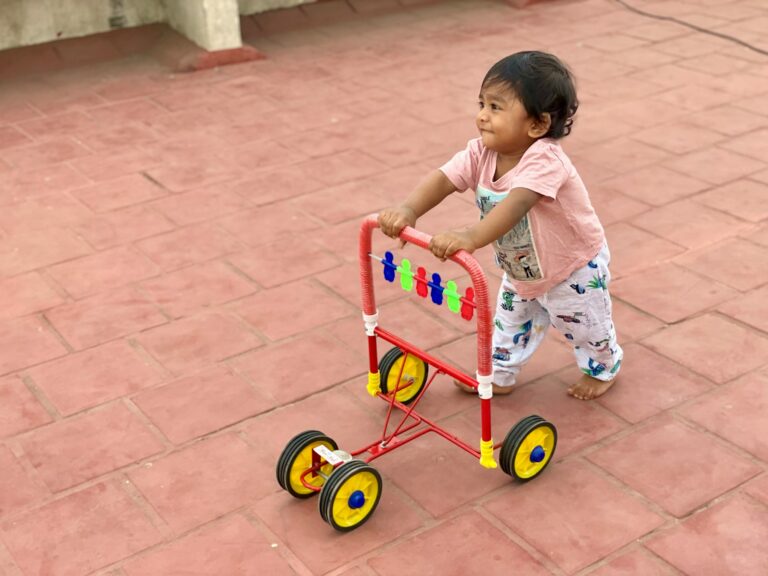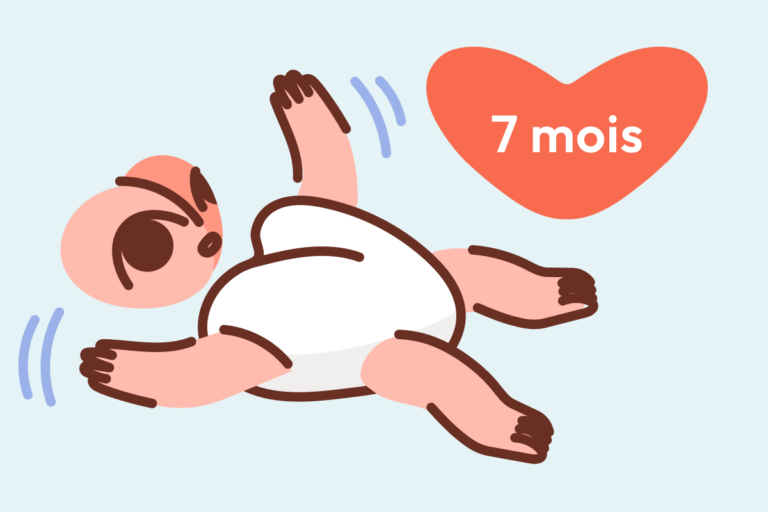Soft sighs, heavy eyelids, the tranquil weight of your baby nestled against you—there’s an undeniable magic in that quiet moment when a baby falls asleep only at the breast. But behind the picture of serenity, countless questions swirl in parents’ minds: Is this normal? Is my child getting enough to eat if they doze off so quickly? Should I be concerned about frequent night waking, or about sleep associations built around breastfeeding? Many parents experience exhaustion, uncertainty, and confusion about how to support their child’s sleep while maintaining the cherished bond of nursing. This exploration breaks down not only the physiological and emotional reasons behind why a baby falls asleep only at the breast, but also evidence-based strategies, medical perspectives, and, above all, compassion for diverse parenting journeys. Expect scientific detail, practical advice, and reassurance—without expecting perfection.
The Physiology Behind Why Babies Fall Asleep Only at the Breast
Unravel how sleep, feeding, and attachment intersect at the breast, creating a powerful routine many parents recognize. From the moment a newborn latches, a cascade of biological processes springs into action. One key player: cholecystokinin (CCK), a digestive hormone released during suckling. As CCK surges, your baby’s body relaxes, heart rate stabilizes, and a wave of drowsiness sweeps in. That’s not all—skin-to-skin contact and chest warmth ramp up oxytocin, reinforcing both bonding and soothing, a duo that virtually invites sleep to overtake them.
During the so-called “fourth trimester,” infants crave sensory input reminiscent of the womb. The constant, rhythmic suckling provides not just sustenance but essential emotional regulation. In essence, when a baby falls asleep only at the breast, it’s a reflection of deep-rooted instincts for security and comfort. This is particularly pronounced due to immature circadian rhythms and a rapidly developing nervous system, making the breast—warm, familiar, and rich in sensory cues—the optimal sleep environment.
Parents often ask: “Is this a bad habit?” Yet, from a scientific viewpoint, it’s a normal infant behavior—a survival strategy hardwired through millennia.
Is It Normal for a Baby to Fall Asleep Only at the Breast? Understanding Changes Over Time
Patterns shift as infants grow. For newborns (birth to three months), falling asleep at the breast is the norm. Limited self-regulation, frequent feeding needs, and high sleep pressure define this stage. As babies move past the four-month mark, the maturing brain brings about subtle changes: longer stretches of wakefulness, more consolidated sleep at night, and, for some, the gradual blending of comfort and independence. However, the reality remains—many infants, even those approaching their first birthday, continue to rely on feeding at the breast to initiate sleep or to soothe between cycles.
Parental worries often escalate with frequent night wakings or concerns that a baby falls asleep only at the breast, never elsewhere. Short naps, fragmented sleep, and the expectation that only one caregiver (the nursing parent) can settle the baby feed these anxieties. The underlying mechanism: a sleep association—the learned connection between breastfeeding and sleep. While this association is sometimes viewed as problematic, it is medically safe for the vast majority of healthy infants, provided milk intake and overall well-being are maintained.
Yet, nuanced vigilance is needed. Red flags—such as poor weight gain, less than four wet diapers in 24 hours, or consistently falling asleep almost immediately during feeds—signal the need for closer supervision. Here, a pediatrician’s evaluation becomes essential.
Decoding Sleep Associations: Why Does Sleep Fragment When Baby Falls Asleep Only at the Breast?
The cycle is familiar. As parents begin to savor a few minutes of peace, their baby is awake again, desperate for comfort at the breast. This can repeat every 45-60 minutes—sometimes the duration of an infant sleep cycle. Why does it happen? During the transition between sleep cycles, most babies briefly awaken to check that conditions remain unchanged. If being at the breast marked the start of sleep, that’s what the baby seeks to recreate when rousing between cycles.
Medical studies confirm that babies are highly sensitive to environmental cues. When babies fall asleep only at the breast, frequent night waking may persist—though some outgrow it naturally over time, especially as their circadian rhythm and sleep drive mature. Recognizing the difference between comfort nursing (feeding for reassurance, not calories) and true hunger can guide interventions.
As melatonin production rises after four months, many babies achieve deeper evening sleep. This, combined with the introduction of solids after six months and the gradual acquisition of independent sleep skills, offers new opportunities for gently supporting autonomy—if and when families choose.
The Bright Side and Potential Pitfalls of Nursing to Sleep
Lean into the positive: breastfeeding to sleep isn’t just about nutrition—it is a potent way to boost emotional security, regulate stress, and build a lasting attachment. The surge of oxytocin, the “love hormone,” creates a physiological feedback loop benefiting both parent and baby. Calmer bedtime routines, reduced bedtime struggles, and a powerful sense of connection are often the result.
Yet, challenges do pop up. If the baby falls asleep only at the breast and does so prematurely at each feed, milk transfer may decrease, potentially risking calorie intake or slowing weight gain. Some families find themselves tethered to a rigid routine, experiencing increased fatigue due to night wakings and limited ability for partners or other caregivers to step in. In extreme cases, persistent short feeds may trigger a downward spiral in supply.
It’s not about good or bad choices. It’s about balance and flexibility—and access to the tools and support needed to tune into each baby’s needs.
Recognizing When Baby Falls Asleep Only at the Breast Has Become a Barrier
Wondering whether the feeding-sleep link has become too strong? Subtle clues often emerge:
- The baby falls asleep only at the breast almost every time, regardless of hunger.
- Short naps break off abruptly if the feeding routine is disrupted.
- Multiple night awakenings—each requiring a return to the breast for resettling.
- Persistent fussiness or protest when caregivers attempt any other settling method.
- The baby struggles to connect sleep cycles independently, rarely linking them unless breastfed.
- Any attempt to lay your baby down awake leads to immediate distress.
When these patterns start interfering with overall sleep quality or family well-being, gentle adjustments may help restore equilibrium.
Step-By-Step Strategies: Supporting More Independent Sleep
Breaking patterns doesn’t mean abrupt withdrawal of comfort or connection. Instead, medical and child development experts point to gradual, responsive steps.
Gradually Unlatch Before Complete Sleep
Start with “the unlatch technique”: allow your baby to breastfeed until calm and drowsy, then gently remove them from the breast just before they drift off. Hold them close against you, letting them finish the transition from waking to sleeping with your comforting presence—but without active nursing. As your baby accepts this step, move towards placing them in their sleep space while still drowsy but not fully asleep, maintaining physical contact—your hand resting gently on their chest, humming softly, offering assurance.
Babies may fuss or protest with mild, steady sounds—this isn’t usually distress, but their way of adapting. Should crying escalate, take a step back; their need for support remains high.
Sleep in Stages: Blending Feeding and Other Soothing Methods
Other practical tweaks to try:
- Switch nursing or gently stimulating during feeds in daylight to keep babies alert and feeding efficiently.
- After breastfeeding, shift seamlessly to another association—rocking, gentle patting, low-volume white noise, or a dedicated comfort object once your baby is old enough (over 12 months for soft toys).
- Separate the feeding space from the sleep area where feasible. Perhaps nursing quietly in the living room, then transitioning to the nursery for sleep. This creates a clear cognitive “bridge” between eating and sleeping.
- Be observant and gradual: some infants adapt swiftly, others balk at any deviation. The pace must follow the child’s readiness.
Introducing New Caregivers into Bedtime Routines
Inviting a partner or a trusted adult to participate signals to your baby that comfort doesn’t depend solely on the breast. Rocking, gentle walks, singing lullabies, or holding your baby until drowsy can build familiarity. If you express milk, alternate nighttime feeds with a bottle, or allow the comfort of a thumb or small cloth as a substitute.
Curiosity: Some babies suddenly take to thumb-sucking, a parent’s sleeve, or a tiny blanket. For others, change requires patience—a gentle hand every night, increasing confidence over time.
Adjusting Sleep Associations and Timing
Sometimes, just the scent or proximity of the breast excites your baby, making separation even harder. Experiment with moving the last feed slightly earlier before bedtime routines begin. For older babies, simple cues like dimming lights, soft music, or a favorite pajama can provide fresh signals for sleep without the breast.
For a proportion of infants, a pacifier (sometimes called a soothing dummy or binky) works as a helpful substitute—though only after breastfeeding is securely established, to avoid interfering with nursing in the early weeks. Expect trial and error: different shapes, materials, or even no pacifier at all.
Medical and Scientific Nuances: When Concerns Arise
Most cases of a baby falling asleep only at the breast pose no threat to health. Still, certain situations merit prompt consultation:
- Noticeable slowing or plateauing of weight gain, especially below birth-weight at two weeks.
- Fewer than four to six wet diapers in a day—an indirect sign of hydration and milk intake.
- Persistent, premature sleep at the breast interfering with milk volume transferred.
- Unusual lethargy, difficulty waking for feeds, or rare spontaneous wakefulness.
- Severe sleep fragmentation in the entire family, impacting daytime function and parental mental health.
Here, professional input is warranted, and collaboration with lactation consultants, pediatricians, or infant sleep specialists can transform the experience. The science supports individualized plans—there is no universal timeline or single standard for weaning sleep associations.
Caring for Your Baby—and Yourself—Through Change
Supporting the gradual shift to more independent sleep means balancing your child’s needs with your own. Maintain regular breastfeeding or milk expression sessions as feeding routines evolve, safeguarding supply and supporting overall health for both parent and child.
Evidence underscores: parental well-being directly impacts family dynamics and infant growth. Lean into help from partners, friends, and family. Steal moments of rest when possible, and adopt supportive feeding positions to ease physical strain. Hydration, nutrition, and realistic expectations build resilience.
Encourage gentle transitions. Night weaning, if considered, works best after six months by slowly shortening night feeds and increasing daytime intake. Distress signals from your baby? Slow down, soothe, and try again later.
Above all, flexibility and compassion towards yourself and your child nourish the process—each family writes their own story.
Key Takeaways
- Baby falls asleep only at the breast describes a common and deeply rooted behavior in infancy, supported by both biological impulses and emotional needs.
- Patterns often shift over time, but many infants naturally fall asleep at the breast from newborn phase through early toddlerhood, and this is recognized by medical science as normal in most cases.
- Building sleep associations around breastfeeding can foster secure attachment and ease bedtime struggles, but may lead to frequent night wakings or fatigue for parents.
- A variety of strategies—ranging from gradual unlatching, introducing new sleep cues, pacing changes, and involving other caregivers—can support more independent sleep, if that is a desired goal.
- Warning signs such as inadequate weight gain or persistent low diaper output deserve professional assessment to ensure growth and development remain optimal.
- Specialists (pediatricians, lactation consultants, infant sleep experts) offer invaluable individualized advice when challenges arise.
- Above all: prioritize a strong bond with your baby, care for your own well-being, and remember that a range of approaches can be valid and healthy.
- For tailored recommendations, health guidance, and free child health questionnaires, discover the Heloa app—a supportive companion for personalized medical education and family support.
Questions Parents Ask
Can falling asleep at the breast be a sign of a problem?
Most of the time, a baby dozing off while breastfeeding is simply a reflection of feeling full, secure, and soothed by close contact. However, if your little one falls asleep almost immediately at each feeding and doesn’t seem to be getting enough milk—such as showing signs of slow weight gain, fewer wet diapers, or not seeming satisfied after feeds—it might signal that something needs attention. In this case, it is important to seek support from a healthcare provider or lactation consultant. Sometimes, minor adjustments can make a big difference in your baby’s comfort and well-being.
How can I gently encourage my baby to stay awake during feeds?
Keeping your baby alert while breastfeeding can be gently encouraged by creating a calm but not overly sleepy environment. Try softly talking or singing, gently rubbing their hands or feet, or lightly stroking their cheek during feeds. Offering feeds in a softly lit room can help, too. If your baby becomes drowsy, unlatch them for a moment, then regroup and try again. Every baby is unique; sometimes a short pause is all it takes to wake them gently.
Should I be concerned if breastfeeding is the only way my baby falls asleep?
It’s entirely natural if your child prefers drifting off at the breast, especially in the early months. This method combines nourishment and emotional comfort, helping many babies feel safe. If you’re content with this routine and your baby is feeding and growing well, there’s no need to worry. As your child grows, changes can happen gradually and at your family’s pace. If you feel the need for a shift—perhaps to include other caregivers in bedtime or to support your own rest—gentle, small changes over time are usually well accepted. And remember, you’re not alone: many parents experience this, and making any adjustments is always a personal decision guided by your family’s unique needs.









